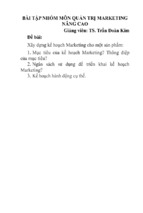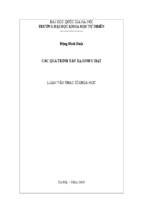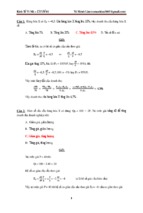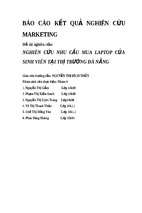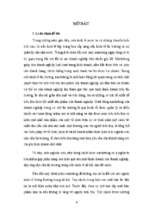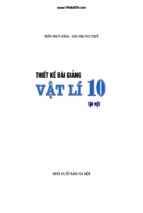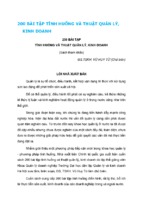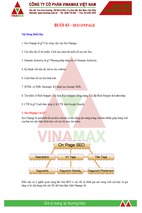Wei-Bin Zhang
A Theory
of International Trade
Capital, Knowledge, and
Economic Structures
Springer
www.ebook3000.com
Author
Dr. Wei-Bin Zhang
National University of Singapore
Department of Economics
10 Kent Ridge Crescent
Singapore 119260
Library ofCongress Cata1oging-in-Pub1ication Data
Zhang, Wei-Bin, 1961A theory of international trade : capital, knowledge, and economic struetures I Wei-Bin Zhang.
p. em. -- (Lecture notes in economics and mathematical systems, ISSN 0075-8442 ; 482)
Includes bibliographical references and index.
ISBN 978-3-540-66917-3
1. International trade--Econometric mode1s. 1. Title. II. Series.
HF1379 .Z49 2000
382--dc21
99-059378
ISSN 0075-8442
ISBN 978-3-540-66917-3
DOI 10.1007/978-3-642-18144-3
ISBN 978-3-642-18144-3 (eBook)
This work is subject to copyright. AII rights are reserved, whether the whole Of part
of the material is concerned, specifically the rights of translation, reprinting, re-use
of illustrations, recitation, broadcasting, reproduction on microfilms or in any other
way, and storage in data banks. Duplication of this publication or parts thcreof is
permitted only under the provisions ofthe German Copyright Law of September 9,
1965, in its current version, and permission for use must always be obtained from
Springer-Verlag. Violations are liabIe for prosecution under the German Copyright
Law.
Springer-Verlag is a company in the specialist publishing group BcrtelsmannSpringer
© Springer-Verlag Berlin Heidelberg 2000
Originally published by Springer-Verlag Berlin Heidelberg New York in 2000
Softcover reprint ofthe hardcover 1st edition 2000
The use of general descriptive names, registered namcs, trademarks, etc. in this
publication does not imply, even in the absence of a specific statement, that such
names are exempt from the relevant protective laws and regulations and therefore
free for general usc.
Typcsetting: Camera ready by author
Printed on acid-free paper
SPIN: 10734481
42/3143/du
www.ebook3000.com
543210
Acknowledgements
I completed this book at the Department of Economics, the National University of
Singapore. I am grateful to an anonymous referee for valuable comments. I would
like to thank Economics Editor Dr. Werner A. Muller and Economics Editorial Ruth
Milewski for effective co-operation .
Chapters 2 to 11 are based on my published or unpublished manuscripts. Grateful
acknowledgment is made to the following sources for the use of my published
materials:
Chapter 2 for Zhang, W.E. (1994a) International Economic Journal;
Chapter 3 for Zhang, W.B. (1995b) International Economic Journal;
Chapter 4 for Zhang, W.B. (1995a) Economic Modelling;
Chapter 5 for Section 3.1 in Zhang, W.B. (1999a) and Zhang, W.E. (1994a);
Chapter 7 for Zhang, W.B. (1992b) Economic Letters;
Chapter 8 for Zhang, W.E. (1993a) International Review of Economics and Finance;
Chapter 9 for Zhang, W.B. (1995) A Two-Region Trade Equilibrium Model - Each
Region with Two Classes and Two Sectors. Working Paper of CERUM,
University of Umea, CWP-1995 :3.
www.ebook3000.com
Preface
Over more than two centuries the development of economic theory has created a wide
array of different concepts, theories, and insights. My recent book Capital and
Knowledge (Zhang, 1999a) shows how separate economic theories such as the
Marxian economics, the Keynesian economics, the general equilibrium theory, and the
neoclassical growth theory can be examined within a single theoretical framework.
The Capital and Knowledge constructs an economic theory to account for the
phenomena explained by the main economic theories (of national economies) in a
unified manner. It tries to draw together the disparate branches of economics into a
single organized system of knowledge.
This book is a part of my economic theory with endogenous population, capital,
knowledge, preferences, sexual division of labor and consumption, institutions ,
economic structures and exchange values over time and space (Zhang, 1996a). As an
extension of the Capital and Knowledge, which is focused on the dynamics of
national economies, this book is to construct a theory of international trade. We are
concerned with dynamic relations between international division of labor, division of
consumption and determination of prices structure in global economy. We examine
dynamic interdependence between capital accumulation, knowledge creation and
utilization, economic growth, price structures and international trade patterns under
free competition. Our theory is constructed on the basis of a few concepts within a
compact framework. The comparative advantage of our theory is that in providing rich
insights into complex of international trades it uses only a few concepts and simplified
functional forms and accepts a few assumptions about behavior of consumers,
producers and institutional structures.
This book constructs a theoretical framework which would permit valid
generalizations from one special modeling structure to another, and would deepen our
understanding of economic evolution. It is a part of my broad approach to revealing
complex of economic evolution (Zhang, 1991c, 1999a, 1998a, I 999b, 2000). I wish
that the reader might appreciate this book within the grand framework of economic
analysis that I have made great efforts to construct.
www.ebook3000.com
Contents
1 Introduction
1.1
1.2
1.3
1.4
1.5
1.6
1.7
The Ricardian Trade Theory
The Neoclassical Theory
The Heckscher-Ohlin Theory
Trade Theory with Capital Accumulation
Trade with Non-Constant Returns to Scale
Trade Theory with Endogenous Technology
The Structure of the Book
.................................
2 Global Growth and Trade Patterns
2.1 The Trade Model with Capital Accumulation
2.2 The Two-Country Economy ...........................................................
2.3 Some Special Cases of the Two-Country Economy .......................
2.4 Discussing the Multi-Country Case ..
Appendix
A. 2.1 Equilibra and Stability in the Two-Country Economy ..................
3 Growth, Trade, and Wealth Distribution among
Groups
3.1
3.2
3.3
3.4
The Dynamic Trade Theory
Equilibrium of the World Economy. ..............................................
The Impact of the Propensity to Hold Wealth
The Impact of Human Capital ......................................................
4 Trade, Time Distribution, and Sexual Division of
Labor
4.1
4.2
4.3
4.4
4.5
International Trade with Sexual Division of Labor
Equilibrium of the Global Economy................................................
Time Allocation and Trade Patterns
The Impact of the Wife's Human Capital.. .....................................
Concluding Remarks
5 Growth and Trade Patterns with National Public
Goods
5.1
The Trade Model with Public Goods
www.ebook3000.com
1
1
4
7
9
11
14
17
23
24
30
34
36
38
38
41
43
45
49
51
53
54
58
61
64
65
67
67
x
Contents
5.2
5.3
5.4
Equilibria of the Global Economy
The Impact of Changes in the Tax Rate
The Impact of Changes in the Population
71
75
77
6 Growth, Trade, and International Migration
80
81
85
90
93
96
6.1
6.2
6.3
6.4
6.5
The Growth Model with Trade and Migration
Equilibrium of the Global Economy .........
The Impact of Amenity on Trade and Migration ..
The Impact of Human Capital on Trade and Migration
Concluding Remarks
7 Trade with Endogenous Capital and Knowledge
7.1
7.2
7.3
7.4
7.5
The Model with Capital and Knowledge
The Dynamics of the Trade System .
The Global Economy in the Autarky System
A Comparison of the Autarky and Trade Systems
Concluding Remarks
8 Global Economic Growth with Trade and Research
8.1 The Model with Trade and Research
8.2 The Dynamics of the Free Trade System
8.3
Equilibria and Stability Conditions
8.4 Does Free Trade Benefit the WorId Economy?
8.5 The Impact of Knowledge Accumulation Efficiency .......................
8.6 Research, Knowledge, and Trade
Appendix
A. 8.1 Equilibra and Stability of the Autarky System
9 Trade Patterns in a Multi-Group and Multi-Sector
Global Economy
9.1
9.2
9.3
9.4
The Multi-Group and Multi-Sector Model
The Existence of Equilibrium
The Impact of Labor Force and Land
The Impact of Landlords' Propensity to Consume Foreign
Goods
9.5
Concluding Remarks
Appendix
A.9.1 Checking Lemma 9.3.2
10 Global Growth, Trade, and Economic Structures
10.1 The Growth Model with Trade and Structures
10.2 The Dynamic Properties of the System
10.3 The Savings Rates and the WorId Economy ......
Appendix
A. 10.1 Proving Proposition 10.2.1
A. 10.2 Proving Proposition 10.2.2
www.ebook3000.com
97
98
100
104
106
108
109
110
113
115
118
121
122
122
122
124
125
128
133
137
138
138
138
140
141
144
148
153
153
156
Contents
11 A Multi-Sector Trade Model with Endogenous
Knowledge
11.1 The Multi-Sector Model with Endogenous Knowledge
11.2 Equilibria and Stability
11.3 The Impact of Knowledge Accumulation Efficiency .......................
11.4 The Impact of the Preference for Foreign Goods
Appendix
A. 11.1 Proving Proposition 11.2.1
A. 11.2 Proving Proposition 11.2.2
Xl
160
160
164
166
168
171
171
173
12 Further Issues on International Trade
175
Bibliography
180
Name Index
190
www.ebook3000.com
1 Introduction
This book is to construct a theory of international trade. We are concerned with
dynamic relations between international division of labor, division of consumption
and determination of prices structure in the global economy. Our main contributions
are related to revealing dynamic interdependence between capital accwnulation,
knowledge creation and utilization, economic growth, price structures and
international trade patterns under free competition. We build our theory in a compact
theoretical framework with a few concepts. The comparative advantage of our theory
is that it uses only a few concepts and simplified functional forms and accepts a few
assumptions about behavior of conswners, producers and institutional structures, but it
achieves rich conclusions and it is conceptually easy to extend and generalize the
theory because of its consistency and simplicity. Before developing our trade theory,
we review some main theories of international economics.
1.1 The Ricardian Trade Theory
Adam Smith (1776) held that a country could gain from free trade. He pointed out that
if one country has an absolute advantage over the other in one production and the
other country has an absolute advantage over the first in another production, both
countries gain from trading. But Smith failed to create a convincing economic theory
of international trade. It is generally agreed that David Ricardo is the creator of the
classical theory of international trade, even though many concrete ideas about trade
existed before his Principles (Ricardo, 1817, Morishima, 1989). The theories of
comparative advantage and the gains from trade are usually connected with his name.
The theory of comparative advantage or the theory of comparative costs is one of
oldest theories of economics. In this theory the crucial variable used to explain
international trade patterns is technology. The theory holds that a difference in
comparative costs of production is the necessary condition for the existence of
international trade. But this difference reflects a difference in techniques of
production. According to this theory, technological differences between countries
determine international division of labor and consumption and trade patterns. It holds
that trade is beneficial to all participating countries. This conclusion is against the
viewpoint about trade held by the doctrine of mercantilism. In mercantilism it is
argued that the regulation and planning of economic activity are efficient means of
fostering the goals of nation.
www.ebook3000.com
2
I Introduction
In order to illustrate the theory of comparative advantage, we consider an example
constructed by Ricardo. We assume that the world consists of two countries (for
instance, England and Portugal). There are two commodities (cloth and wine) and a
single factor (labor) of production. Technologies of the two countries are fixed . Let us
assume that the unit cost of production of each commodity (expressed in terms of
labor) is constant. We consider a case in which each country is superior to the other
one in production of one (and only one) commodity. For instance, England produces
cloth in lower unit cost than Portugal and Portugal makes wine in lower unit cost than
England. In this situation, international exchanges of commodities will occur under
free trade conditions. It benefits both England and Portugal if the former is specified
in the production of cloth and the latter in wine . This case is easy to understand. The
Ricardian theory also shows that even if one country is superior to the other one in the
production of two commodities, free international trade may still benefit the two
countries. We may consider the following example to illustrate the point.
Let us assume that the unit costs of production of cloth and wine in terms of labor are
respectively 4 and 8 in England; while they are 6 and lOin Portugal. That is,
England is superior to Portugal in the production of both commodities. It seems that
there is no scope for international trade since England is superior in everything. But
the theory predicts a different conclusion. It argues that the condition for international
trade to take place is the existence of a difference between the comparative costs .
Here, we derme comparative costs as the ratio between the unit costs of the two
commodities in the same countries. In our example comparative costs are
4/8 = 0.5 and 6/10 = 0.6 in England and Portugal respectively. It is
straightforward to see that England has a relatively greater advantage in the
production of cloth than wine: the ratio of production costs of cloth between England
and Portugal is 4/6 ; the ratio of production costs of wine is 8/10. It can also seen
that Portugal has a relatively smaller disadvantage in the production of wine. The
Ricardian model predicts that if the terms of trade are greater than 0.5 and smaller
than
0.6 , British cloth will be exchanged for Portuguese wine to the benefit of both
countries. For instance, if we fix the trade terms at 0.55 which means that 0.55
units of wine exchanges for one unit of cloth, then in free trade system in England one
unit of cloth exchanges for 0.55 units of wine (rather than 0.5 as in isolated system)
and in Portugal 0.55 (rather than 0.6) unit of wine exchanges for one unit of cloth.
The model thus concludes that international trade is beneficial to both countries. It is
easy to check that the terms of trade must be strictly located between the two
comparative costs (i.e., between 0.5 and 0.6 in our example). It is direct to check
that if the terms of trade were equal to either comparative cost, the concerned country
would have no economic incentive to trade; if the terms of trade were outside the
interval between the comparative costs, then some country will suffer a loss by
engaging in international trade .
This theory may be represented in different ways. For instance, we may interpret the
theory of comparative costs in terms of optimization. We refer the following example
www.ebook3000.com
1.1 The Ricardian Trade Theory
3
to Gandolfo (1994a). We consider a simple case in which the world economy consists
of two countries and produces commodities. Here, we consider the benefits from
international trade in terms of an increase in the quantity (rather than utility) of goods
which can be obtained from the given amount of labor. Our optimal problem is to
maximize each country's real income under constraints of the fixed labor and
technology. We use
P..
and
Py
to denote the absolute prices of goods x and
Y
(expressed in terms of some external unit of measurement, for instance, gold) . Under
the assumptions of free trade, perfect competition and zero-transportation cost, the
domestic price ratio is equal between the two countries . The exchange ratio of the two
goods, P../ P y , is taken as given. Let
outputs of goods
and
X
Y
and
Nj
x j and
Yj
denote respectively country j's
stand for country j's fixed labor force . Country
j 's optimal problem is defmed by
Max Y. = (P")x . + y.,
)
P
subject to
in which
Q
1j
and
Yj
Q
2j
,
y
}
}
Q1jX j
+ Q2 jYj s N j , x j '
r. ~ 0,
j
= 1, 2
is country j 's real national income measured in terms of good
(1.1.1)
Y
and
are respectively country j's unit costs of production of goods x and
Y . The optimal problems defined by (1.1.1) can fmd an easy graphic solution. It is
shown that international trade and international specification occur as a consequence
of the maximization of the real national income of each country separately considered.
One of the attractive features of the Ricardian model is that its modeling structure
allows virtually all the results obtained for the simple two-commodity and two-country
case to be extended to many countries and many commodities, even though some new
features appear in high dimensions (e.g., Jones and Neary, 1984). For example, when
the global economy consists of many commodities but only two countries,
commodities can be ranked by comparative costs in a chain of decreasing relative
labor costs :
(1.1.2)
in which
j
Q ij
is country
= 1, 2, ..., n.
i's labor requirement per unit output in sector j , i
= 1, 2,
Demand conditions determine where the chain is broke. The
comparative unit costs ensure that country I must export all commodities to the left of
the break and import all those to the right, with at most one conunodity produced in
common.
4
1 Introduction
This theory assumes that production costs are independent of factor prices and the
composition of output. The model throws no light on issues related to the internal
distribution of income since it assumes either a single mobile factor or multiple mobile
factors which are used in equal proportions in all sectors. From this theory we can
only determine the limits within which the terms of trade must lie. Since it lacks of
consideration of demand sides, the theory cannot determine how and at what value the
terms of trade are determined within the limits. This is a serious limitation of this
theory because a trade theory should be able to explain the causes and directions of
trade but also to determine the terms of trade.
1.2 The Neoclassical Theory
The Ricardian theory failed to determine the terms of trade, even though it can be used
to determine the limits in which the terms of trade must lie. It was recognized long ago
that in order to determine the terms of trade, it is necessary to build trade theory which
not only takes account of the productive side but also the demand side (Negishi, 1972,
Dixit and Norman, 1980, Jones, 1979). The neoclassical theory holds that the
determinants of trade patterns are to be found simultaneously in the differences
between the technologies, the factor endowments, and the tastes of different countries
(Mill, 1848, Marshall, 1890). Preference accounts for the existence of international
trade even if technologies and factor endowments were completely identical between
countries.
The Marshallian offer curve has been often used to analyze problems such as the
existence of equilibrium, the stability of equilibrium, the gains from trade, optimum
tariffs and so on within static frameworks. For illustration, we show how Mill solved
the trade equilibrium problem and how this problem can be solved with help of
modern analytical tool. Mill introduced the equation of international demand,
according to which the terms of trade are determined so as to equate the value of
exports and the value of imports. He argued: "the exports and imports between the
two countries (or, if we suppose more than two, between each country and the world)
must in the aggregate pay for each other, and must therefore be exchanged for one
another at such values as will be compatible with the equation of the international
demand" (Mill, 1848: 596). Mill initiated the theory of reciprocal demand which is
one of the earliest examples of general equilibrium analysis in trade theory. In Chapter
18, book 3 of his Principles, he showed the existence of trade equilibrium, using a
simplified model and explicitly solving equations in the model numerically. He
assumed that there exists only one factor of production and production is subjected to
constant returns to scale and requires on the demand side as follows: "Let us therefore
assume, that the influence of cheapness on demand conforms to some simple law,
common to both countries and to both commodities. As the simplest and most
convenient, let us suppose that in both countries any given increase of cheapness
produces an exactly proportional increase of consumption; or, in other words, that the
value expended in the commodity, the cost incurred for the sake of obtaining it, is
always the same, whether that cost affords a greater or a smaller quantity of the
1.2 The Neoclassical Theory
5
commodity." (Mill, 1848 : 598) . As a numerical example, consider that the world
economy consists of Germany and England and the economic system has two goods,
cloth and linen . Let us assume that in Germany 10 yards of cloth was exchanged for
20 yards of linen and that England wants to sell 1,000,000 yards of cloth to
Germany. If Germany wants 800,000 yards of cloth, this is equal to 1,600,000
yards of linen at German exchange ratio. Since German expended value in cloth is
constant, England will receive 1,600,000 yards oflinen in exchange of 1,000,000
yards of cloth, replacing Germany supply of cloth entirely. Under the assumption
mentioned above and some additional requirements, Mill explicitly solved the
international exchange ratio of two commodities in terms of coefficients of production
in two countries and by so doing showed the existence of trade equilibrium. Chipman
pointed out that the case analyzed by Mill can be treated as a problem of non-linear
programming and the existence of trade equilibrium can be proved by the existence
theorem ofa solution of non-linear programming (Chipman, 1965a, Negishi, 1972).
We now use analytical methods to prove the existence of trade equilibrium as showed
by Mill (Negishi, 1972). This example also illustrates the difference between the
Ricardian theory and the neoclassical theory. Let subscript indexes 1 and 2 represent
respectively Germany and England. We denote the amount of cloth and linen
produced by country j
respectively
Y je
and
Y jl
which are non-negative. If we
denote the total amount of cloth (linen) produced in country j when the country is
completely specified in producing cloth (linen) by a je (a j l
),
the possible sets of Y
je
and Y j/ are given by
-Y j e + -Y n -< 1,
aje
-»
> 0,
Y je' Y jl -
)
. = 1,2 .
(1.2.1)
The above two equations mean that the demand for labor does not exceed the supply
in each country. We denote respectively the prices of cloth and linen by Pc and PI '
At equilibrium country
i :s production structure (y je ' Y j l )
Multiplying (1.2.1) by
a je (j
should maximize
= 1, 2) and adding the two equations, we get
6
I Introduction
where
If we assume that Germany has the comparative advantage in linen, i.e.,
al e / all < a 2e / a 21, from the above inequality we get
L..+l'L~~
al e
all
== Yll + Y2/" Similarly multiplying (1.2.1) by a j/ , we get
where YI
Ye
«;
(1.2.2)
al e
+ YI ~!!.L
a2/
(1.2.3)
a 21
In order to describe the demand, let x e (~
0), XI
(~
0)
and
R
(~
0)
respectively
stand for the demand for cloth, demand for linen, and income measured in terms of the
factor of production. Ma ximizing the following utility
subject to the budget constraint p ex c
+ PIXI
=R
yields the demand functions
which satisfy Mill 's assumption. Since the two countries have an identical preference
structure but different incomes, we have that country j 's demand for cloth and linen,
X j c and X j l , are given by
X jc -
R.
}
-2
Pe
where
X
R.
jl
-2'
PI
.I
J. -- 1, 2
( 1.2.4)
R j is country j ' s income. Since demands for commodities cannot exceed
supplies at the equilibrium of free international trade , we have
1.3 The Heckscher-Ohlin Theory
Xc
:$
Ylc + Yzc' X I :$ YI/ + Y2I
7
(1.2.5)
where
Introduce the world utility function as
U
= log Y, + logXI .
We maximize this U subject to (1.2.1) and (1.2.5). The Lagrangean is given by
+ "z w .(Yjc + Yjl L..Jj=1
j
a.
jC
a.
IJ.
jl
It is shown that the Lagrangean has a strictly positive saddle point at which (1.2.1) and
(1.2.5) are satisfied with equality at the saddle point. In fact, this saddle point is an
equilibrium of free international trade, with Pc / PI' w J / PI and W z / PI
respectively satisfying the price of cloth, the price of factor of production in Germany
and in England. Since the world total income is equal to
we have
R j = w j . By (1.2.4) we get X jc and X jl which is an optimal solution of
the problem that country j maximizes its utility subject to its budget constraint with
the given world prices.
1.3 The Heckscher-Ohlin Theory
The Ricardian model and Heckscher-Ohlin model are two basic models of trade and
production. They provide the pillars upon which much of pure theory of international
trade rests. The so-called Heckscher-Ohlin model has been one of the dominant
models of comparative advantage in modern economics. The Heckscher-Ohlin theory
emphasizes the differences between the factor endowments of different countries and
differences between commodities in the intensities with which they use these factors.
The basic model deals with a long-term general equilibrium in which the two factors
are both mobile between sectors and the cause of trade is different countries having
different relative factor endowments. This theory deals with the impact of trade on
8
1 Introduction
factor use and factor rewards. The theory is different from the Ricardian model which
isolates differences in technology between countries as the basis for trade. In the
Heckscher-Ohlin theory costs of production are endogenous in the sense that they are
different in the trade and autarky situations, even when all countries have access to the
same technology for producing each good. This model has been a main stream of
international trade theory. According to Either (1974), this theory has four "core
proportions". In the simple case of two-commodity and two-country world economy,
we have these four propositions (which are of course held under certain conditions) as
follows: (1) factor-price equalization theorem by Lerner (1952) and Samuelson (1948,
1949), stating that free trade in fmal goods alone brings about complete international
equalization of factor prices; (2) Stolper-Samuelson theory by Stolper and Samuelson
(1941), saying that an increase in the relative price of one commodity raises the real
return of the factor used intensively in producing that commodity and lowers the real
return of the other factor; (3) Rybczynski theorem by Rybczynski (1955), stating that
if commodity prices are held fixed, an increase in the endowment of one factor causes
a more than proportionate increase in the output of the commodity which uses that
factor relatively intensively and an absolute decline in the output of the other
commodity; and (4) Heckscher-Ohlin theorem by Heckscher (1919) and Ohlin (1933),
stating that a country tends to have a bias towards producing and exporting the
commodity which uses intensively the factor with which it is relatively well-endowed.
The Heckscher-Ohlin theory provides simple and intuitive insights into the
relationships between commodity prices and factor prices, factor supplies and factor
rewards, and factor endowments and the pattern of production and trade. Although the
Heckscher-Ohlin model was the dominant framework for analyzing trade in the 1960s,
it had neither succeeded in supplanting the Ricardian model nor had been replaced by
the specific-factor trade models. Each theory has been refmed within 'small scales' .
Each theory is limited to a range of questions. It is argued that as far as general ideas
are concerned, the Heckscher-Olin theory may be considered as a special case of the
neoclassical theory mentioned before as it accepts all the logical promises of
neoclassical methodology (e.g., Gandolfo, 1994a). The Heckscher-Olin theory may be
seen as a special case of the neoclassical trade theory in which production technology
and preferences are internationally identical. This loss of generality has long been held
necessary in order to construct a clear picture of international trade patterns and
division of labor and consumption. This book shows that it is possible to construct a
compact trade theory without loss of the generality characterized of the neoclassical
trade theory.
Ricardo's initial discussion of the concept of comparative advantage is limited to the
case when factors of production are immobile internationally. His arguments about
gains from trade between England and Portugal are valid only if English labor and/or
Portuguese technology (or climate) are prevented from moving across national
boundaries. The Heckscher-Ohlin theory is similarly limited to the study of how
movements of commodities can substitute for international movements of productive
factors. It is obvious that if technologies are everywhere identical and if production is
sufficiently diversified, factor prices become equalized between countries. But if
1.4 Trade Theory with Capital Accumulation
9
production functions differ between countries, no preswnption as to factor
equalization remains. Most of early contributions to trade theory deal with goods trade
only and ignore international mobility of factors of production. For a long period of
time since Ricardo, the classical mobility asswnption had been well accepted. This
asswnption tells that all final goods are tradable between countries whereas primary
inputs are non-tradable, though they are fully mobile between different sectors of the
domestic economy. In reality, this classical asswnption is invalid in many
circumstances. For instance, many kinds of fmal 'goods', services, are not-trade and
capitals are fully mobile between countries as well as within domestic economies. A
great deal of works on trade theory has been concerned with examining the
consequences of departures from these asswnptions. There is an extensive literature
on various aspects of international factor mobility (Jones and Kenen, 1984, Ethier and
Svensson, 1986, Bhagwati, 1991, Wong, 1995). We will not review this literature.
1.4 Trade Theory with Capital Accumulation
It may be true to say that most of the pure theory of international trade emerged from
Ricardo's Principles. The simple example of the exchange of cloth and wine between
England and Portugal gives us a beautiful illustration of the concept of comparative
advantage. The further development of the subject by Mill, Marshall and Edgeworth
remained largely within the bounds set by Ricardo. Since then, there had been much
attention focused on the determination of the terms of trade by reciprocal demand
within frameworks of many goods, countries and factors under various forms of
intervention. As mentioned by Findlay (1984), one topic that was almost entirely
absent from the pure theory of international trade was any consideration of the
connection between economic growth and international trade in classical literature of
economic theory. Almost all of trade models developed before the 1960s are static in
the sense that the supplies of factors of production are given and do not vary over
time; the classical Ricardian theory of comparative advantage and the HeckscherOhlin theory are static since labor and capital stocks (or land) are assumed to be given
and constant over time. Although Marshall held that it is important to study
international trade in order to be clear of the causes which determine the economic
progresses of nations, it has only been in the last three or four decades that trade
theory has made some systematical treatment of endogenous capital accumulation or
technological changes in the context of international economics.
The consideration of endogenous capital or technological change in trade theory was
influenced by development of neoclassical growth theory with capital accumulation
and growth theory with endogenous knowledge. This order of development of
economic theory is reasonable as it is only after we are able to explain how national
economies operate that we can effectively model international economies. When
economists had no compact framework to explain national economies, it is hard to
imagine how international economies could be analyzed comprehensively. A national
economy may be perceived as a special case of the global economy in the sense that
the global economy is national when it consists of identical multiple national
10
1 Introduction
economies. Since there was no compact framework of operations of national
economies with endogenous capital and knowledge, it is reasonable to know that there
was no compact framework to analyze international trade.
Trade models with capital movements are originated by MacDougall (1960) and
Kemp (1961), even though these models were limited to static and one-commodity
frameworks. A dynamic model, which takes account of accumulating capital stocks
and of growing population within the Heckscher-Ohlin type of model is initially
developed by Oniki and Uzawa and others, in terms of the two-country, two-good,
two-factor model of trade. The Oniki-Uzawa model is developed within the
framework of neoclassical growth theory. The model is primarily concerned with the
process of world capital accumulation and distribution with demands and supplies as
fast processes. The two-sector growth model has often been applied to analyze the
interdependence between trade patterns and economic growth. These models are used
to study the dynamics of capital accumulation and the various balance of payments
accounts. There are different sets of assumptions made about the structure of trade.
For instance, In the trade models by Oniki and Uzawa (1965) and Johnson (1971) free
trade in both consumption and investment goods are allowed. This framework was
extended by Zhang (1995a, 1996b, 1997, 1998b, 1998c). An alternative specification
of trade structure in the growth framework allows for the existence of international
fmancial markets and for free trade in consumption goods and securities, but not in
investment goods (e.g., Fisher and Frenkel, 1972). This framework emphasizes the
interaction of foreign borrowing, debt service, and domestic capital accumulation. The
two-sector neoclassical growth theory was also applied to analyzing small open
economies (Bardhan, 1965, Ryder, 1967, Bruce, 1977).
Eaton (1987) proposed a dynamic two-sector, three-factors model of international
trade. The dynamic specification of the model is based on Samuelson's (1958)
overlapping generations model. The dynamic model at each point of time t proposed
by Eaton is identical to the three-factor, two-commodity model examined in a static
context by Jones (1971), Samuelson (1971) and Mussa (1974). The model tries to
extend the Heckscher-Ohlin theory to include endowments of factor as endogenous
variables. In this model land and capital serve not only as factors of production but
also as assets which individuals use to transfer income from working periods to
retirement. The model shows that changes in the terms of trade and in the endowments
of fixed factors do not necessarily have the same effects on factor prices and on the
composition of output as they do in a static framework. Some results obtained from
the specific-factors model about the relationships between commodity prices and
factor prices, factor endowments and factor rewards, and factor endowments and the
pattern of production are not held in the dynamic model. For instance, a permanent
increase in the relative price of one commodity does not necessarily lower the steadystate income of the factor specific to the industry producing the other commodity.
Obstfeld (1981) examined the savings behavior of a small economy facing a certain
world real interest rate. Obstfeld proposes a dynamic Heckscher-Ohlin model with
internationally mobile capital and overlapping generations of infinitely-lived agents.
1.5 Trade with Non-Constant Returns to Scale
11
The model focuses on the effects of government debt and spending shocks. Devereux
and Shi (1991) developed a trade model which includes intertemporal consumptionsavings decisions with the use of recursive preferences. These preferences make it
possible to analyze heterogeneity in a representative-agent infmite horizon model with
well-defined steady states. The key factors driving the steady state are the
convergence of national rates of time preference with one another and the monotonical
relationship between consumption and the real interest rate at the steady state. This
implies that each country's share of total world output depends only on its degree of
impatience and not on country-specific factors. From this model it concludes that the
more patient country has a higher steady-state consumption and will be a steady-state
external creditor.
1.5 Trade with Non-Constant Returns to Scale
As shown in Zhang (1994c, 1999a), increasing returns to scale is a characteristic
feature of many economic activities. It may come from population dynamics,
knowledge creation and utilization, and institutional changes. But the history of
economic analysis shows that it is not an easy matter to formally model non-constant
return to scales within a competitive framework. In fact most of economic theories are
developed under the assumption of constant returns to scale, even though economists
have long ago recognized the significance of increasing returns to scale in production
for determining international trade patterns. Nonetheless increasing returns had never
played a central role in the trade theory until the recent developments of the new trade
theory. The assumption that technology exhibits constant returns to scale has been
accepted in most general equilibrium models. Most theoretical economists have been
wary of modeling increasing returns. It is analytically difficult to handle with
increasing returns within the framework of perfect competition. New modeling
frameworks require in order to maintain the assumption of perfectly competitive
behavior with increasing returns. Some years ago Chipman (1965b) pointed out two
reasons for this omission. The first reason is that economies of scale tend to be
ignored in theoretical models not so much on empirical grounds as for the simple
reason that it is difficult to build a trade theory with increasing returns. This is indeed
a poor reason; but no theoretical trade economist could avoid being criticized for
neglecting one of the principle sources of international trade simply due to this reason.
The second reason given by Chipman is that the presence of increasing returns in
production leads to multiple equilibria. The existence of multiple trade patterns
introduces an intrinsic arbitrariness into the determination of the international pattern
of specification and trade. It is known that if there are multiple equilibria, comparative
static analysis becomes invalid. It should be remarked that what Chipman had pointed
out have been recently overcome by trade economists. Trade economists have
proposed many theoretical trade models with increasing returns. They have overcome
the theoretical difficulties involved in building such models and they have recently
accepted the existence of multiple equilibria and instability as economists naturally
accepted the existence of a unique equilibrium and stability in the 60s and 70s.
12
1 Introduction
Adam Smith (1776) used the story of the pin factory to illustrate the idea that the
conception of increasing returns to scale is central to the explanation of long-run
growth. There is interdependence between the division of labor and learning by doing.
As skill is increased, the worker will concentrate on a special task and thus further
increase his skill. Smith examined the relationship between international division of
labor and trade. Marshall was aware of the inevitably changing technological and
social framework within which economies operated. He provided a vision of "organic
growth" of economic systems. He considered individuals to respond to economic
opportunities locally with partial adjustments occurring over time. Increasing return to
scale economies were explicitly treated in his theoretical framework of partial
analysis. He argued that returning to scale economies were due to technological
changes and other social and economic factors. Marshall (1890) distinguished
between internal and external scale economies and examined the possibility of
multiple equilibria. He recognized possible technological and organizational sources
of increasing returns to scale that are internal to establishments, business firms and
industries. He noted a number of conditions, including greater possibilities for
specialization in the provision of intermediate inputs, a [mer division of labor, and the
more rapid diffusion of innovation among specialized producers and workers.
Marshall introduced the notion of an "external economy" to discuss the existence of
the equilibrium of a decentralized price taking economy in the presence of aggregate
increasing returns. He noted that an increase in trade represents a form of external
economy when production knowledge cannot be kept secret. Marshall's argument
shows that if knowledge is treated as an endogenous variable in economic growth,
then the system may exhibit multiple equilibria and it is not necessary for equilibrium
to be stable.
Classical trade theory does not neglect technology. Ricardo's doctrine of comparative
costs presupposed that countries differed from one another in the productivity of labor
in producing commodities. Although the Ricardian theory is not concerned with how
technology itself may be affected by trade, the theory studies the consequence of
technologies differing between countries. Marshall was concerned with trade and
increasing returns. Issues related to gains from trade and other social welfare were
well raised even in the classical tradition. For instance, Marshall discussed terms of
trade effects, arguing that with increasing returns to scale a country may improve its
terms of trade by expanding demand for its imports. Graham (1923) argued that
economies of scale may cause a country to lose from trade. For instance, consider an
economy in which there is a single production factor, labor, and equal prices of both
goods. Also suppose that as a result of foreign trade a country shifts labor from the
increasing returns to scale industry to the decreasing returns to scale industry. Then
output per man falls in both industries, thereby reducing gross domestic product at
constant prices. He held that when a country has a sector with increasing returns to
scale and a sector with decreasing returns to scale it may lose from trade. He
suggested that in this case a tariff is beneficial. Knight (1924) argued that Graham's
analysis of the possible losses from trade is valid if the economies ofscale are external
to the firm and internal to the industry; but it is wrong if the economies of scale are
internal to the firm. Ethier (1979, 1982b) explored the conditions under which
1.5 Trade with Non-Constant Returns to Scale
13
Graham's arguments hold: they depend on the nature of the increasing returns which
are either national or international and the pattern of change in relative prices due to
the transition from autarky to trade.
Economists have recognized long time ago that economies of scale provide an
alternative to differences in technology or factor endowments as an explanation of
international trade. But increasing returns as a cause of trade has received relatively
little attention from formal trade theory. Ohlin (1933) pointed out that economies of
scale serve as one explanation of foreign trade patterns. Since then, many trade
theorists emphasized the role of monopolistic competition in differentiated products.
In particular, there exist early attempts to extend trade theory on the basis of
Chamberlin's Monopolistic Competition (Chamberlin, 1933). Explicit generalequilibrium analysis of trade based on external economies was initiated with
Matthews (1949). Kemp and Negishi (1970) made an important contribution to the
literature, showing that gains from trade are guaranteed if free trade leads to an
expansion (noncontraction) of all increasing returns industries and nonexpansion of all
decreasing returns industries. Eaton and Panagariya (1979) refmed the Kemp-Negishi
result. They proved that there are gains from trade as long as there exists an industry
such that all industries with stronger degree of increasing returns (to weaker
decreasing returns) do not contract in the move to free trade, and all industries with
weaker increasing returns (or stronger decreasing returns) do not expand. In order to
take account the relative importance of increases and decreases in the increasing
returns to scale sectors, Markusen and Melvin (1984) defmed a weighted average rule
which applies under the assumption of convex production possibilities frontier and the
absence of factor market distortions. But this rule is not valid when increasing returns
lead to nonconvex production possibilities. Helpman and Krugman (1985) provided a
rule that applies if aggregate factor usage is fixed between equilibria. Grinols (1992)
develop a rule which applies to more general cases and does not require a convex
production possibility frontier or fixed factor usage between equilibria. He develops a
sufficient condition for gains from trade when some increasing returns industries
expand and others contract. His conclusions do not depend on the restrictions that the
production frontier must be convex, changes must satisfy a pre-specified hierarchical
pattern, or that total factor supplies must be fixed between equilibria.
Krugman (1989, 1990) developed a trade model with a single scarce factor of
production, labor, on the basis of the assumptions that scale economies are internal to
firms and the market structure is one of Chamberlian monopolistic competition. His
treatment of monopolistic competition was influenced by the model by Dixit and
Stiglitz (1977). He produced trade between identical economies where comparative
advantage is not the cause of trade, whether that comparative advantage comes from
Ricardian or Heckscher-Ohlin factors. It is shown that trade may be a way of
extending the market and allowing exploitation of scarce economies, with the effects
of trade being similar to industrial, urban, or regional agglomeration. This trade model
is better suited to explain intraindustry trade (i.e., trade in similar products) between
advanced countries.
- Xem thêm -

